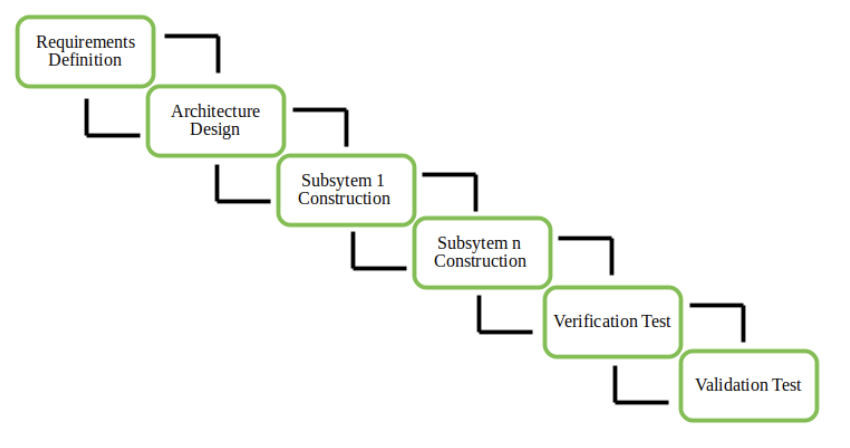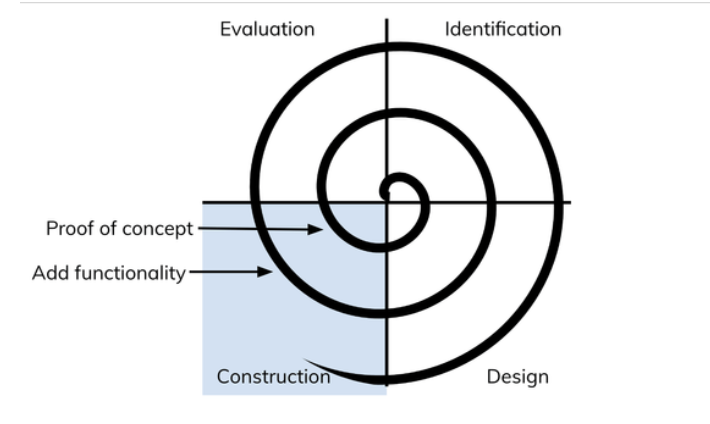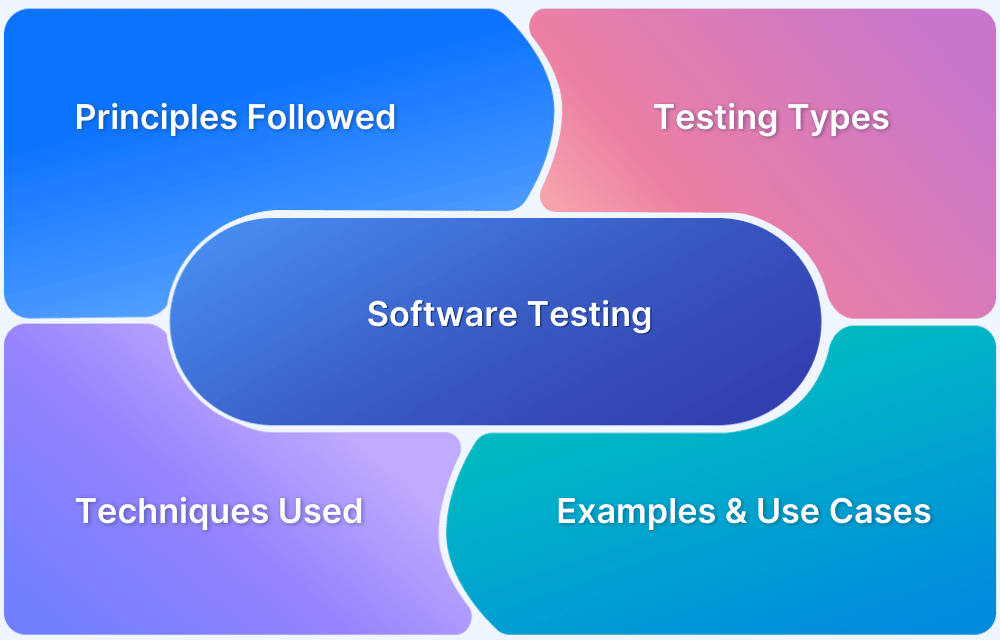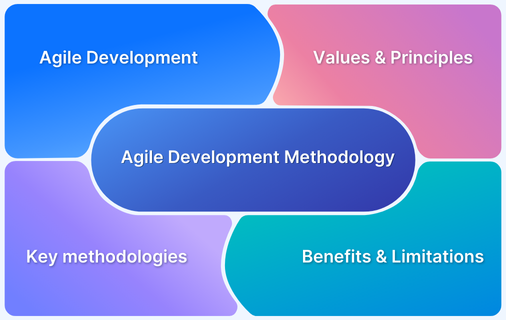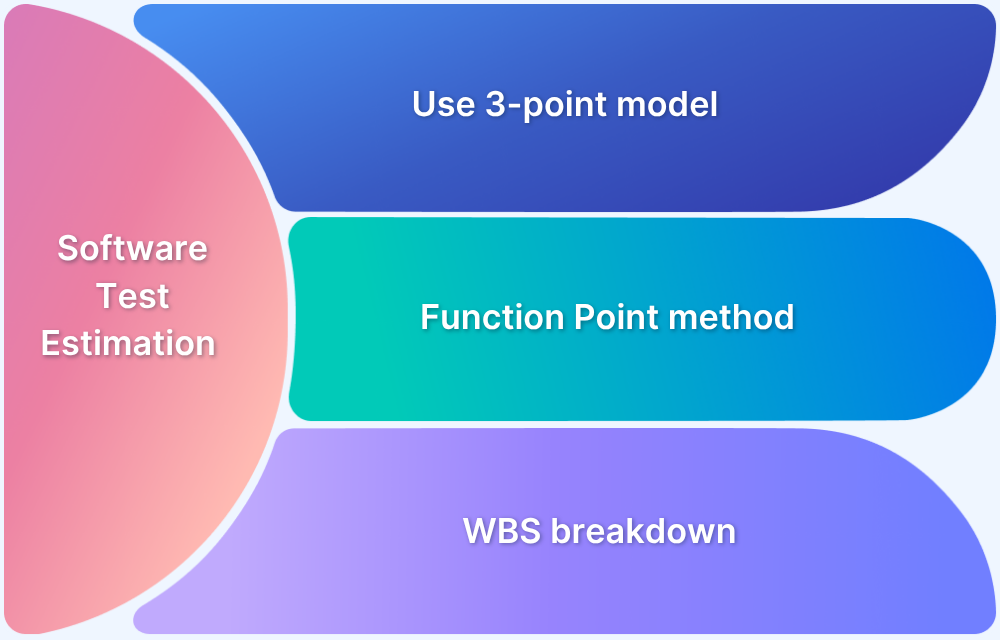Testing goes hand-in-hand with preparation, designing, and executing the code; treating it as an isolated procedure would be wrong. Therefore, following an effective test methodology early in the SDLC and adopting a testing infrastructure could help you identify and solve defects effectively.
Overview
What is Testing Methodology
Software testing methodologies refer to approaches and strategies that help test a precise product to ensure it is fit for purpose. Testing methodology ensure that the product functions along with its specification, has no unwanted side effects when used in modes outside of its design parameters, and, in the worst case, will fail safely.
Types of Testing Methodologies
- Waterfall Model
- Agile Model
- Iterative Model (Iterative and Incremental Development)
- Verification and Validation Methodology (V-Model)
- Spiral Model
- Extreme Programming (XP) Model
This article focuses on the pioneer software development methodologies that are universally accepted and used by companies across the globe.
What is Testing Methodology in Software Testing?
Software Testing methodologies are the approaches and strategies used for testing a precise product to make sure it is fit for purpose. It generally entails testing that the product functions along with its specification, has no unwanted side effects when used in modes outside of its design parameters, and, in the worst case, will fail safely.
Some well-accepted testing methodologies comprise – Waterfall model, Agile methodology, iterative model, verification and validation Methodology (V-Model), Spiral Model, Extreme Programming Model, RAD (Rapid Action Development) Methodology, and many others.
Importance of Software Testing Methodologies
Software testing methodologies forms the backbone of reducing testing cycle time in the following manner
- Every testing methodology provides productive solutions that ensure a software project meets the business necessities and manages the user experience.
- QA testing methodologies are pivotal, giving a sense of direction of why and how testing should be executed.
- Directs organizational structure, project management, and the implementation of testing techniques.
- Software testing methodologies handle your project requirements, bugs, issues, and test cases in a sole integrated environment, with complete traceability throughout the test lifecycle.
- It is an inclusive testing solution that counts requirements management, release management, test case designs, defect tracking, and many others from day one.
Functional and Non-functional testing methodologies
Different testing methodologies help ensure that your software functions properly in multiple environments and platforms.
Testing Methodology can be broken down into functional and non-functional testing:
Function Testing Methodology
In functional testing, the application is tested against the business goals. It comes with all the testing types that ensure the software functions as intended by using multiple use cases provided by a business analyst or design team. These testing methods include the likes of:
Non-functional Testing Methodology
Non-functional testing methodologies include testing types that focus on the operational side of a software. Examples of non-functional testing methods are:
- Performance testing
- Security testing
- Usability testing
- Compatibility testing
6 Different Types of Testing Methodologies
Here are the different types of testing methodologies that are commonly used:
1. Waterfall Model
This model for testing works perfectly for small, less complicated projects and is built on a team’s step-by-step growth during the test procedure. As it has fewer players and procedures to tend with, this can result in speedy project completion. But, bugs are found at later phases, making them extremely costly.
One of the key benefits of this methodology is that it is comparatively easy. The drawback is that the QA’s wouldn’t be able to make quick corrections to the test procedure, as it is regimented.
Benefits
- Used to plan & managing project requirements easily.
- Speedy project implementation in QA testing methodologies.
Drawbacks
- This model is a predefined methodology and can’t be skipped.
- Even a slight modification in the methodology can bear excessive expenses.
Use Cases
- HRMS (Human Resource Management systems)
- CRMS (Customer Relationship Management systems)
- Point of Sale systems
- IMS (Inventory Management systems)
- Supply Chain Management systems
2. Agile Model
The Agile model is dissimilar from the waterfall methodology and is well-suited for big development projects.
- An agile test is an incremental model where tests are executed at the end of each iteration or increment.
- It can cover the sphere of tests and software development, and marketing.
- The outcomes are better with agile methodology when an experienced and strong product manager can make rapid decisions.
Besides, the complete app is ideally tested at the end of the project. There is a lesser threat in the development procedure with the agile technique as every team member understands what has not or has been completed.
You might also hear about a famous working model named Scrum. It is a part of the agile model and is also based on sprints. Every sprint in Scrum concludes with a review meeting wherein QA members examine progress and plan future test sprints.
Benefits
- Complicated app processes can be managed, changed, and tested without problems.
- Incremental testing reduces the cost and threats related to numerous changes.
Drawbacks
- An inferior planning priority can result in document inefficiencies.
- Increased to & fro with customers may result in extended delivery times.
Use Cases
- Performance and Load testing
- Defining the Tests scope of an app
- New functionalities in an app
Browserstack Automate assists agile testing teams in testing for quality at scale. It offers integrations with a wide range of tools that enable CI and Agile-driven practices – Jenkins, TeamCity, Bamboo, Travis CI, and more.
3. Iterative Model (Iterative and Incremental Development)
In the iterative methodology, software developers form basic versions of the software and review & enhance the app in iterations— smaller components or steps. It is data-driven, and all iteration is based on the outcomes of the previous test cycle.
This is a perfect approach for large apps that must be finished rapidly. Errors can be noticed earlier, making them less expensive to resolve.
Benefits
- Smaller iterations for complicated software lessen development costs and time.
- In contrast to the documentation, this methodology provides extra flexibility and concentrates on design.
Drawbacks
- General communication overheads significantly increase after every feedback iteration
- The iteration cycle is stiff and does not be overlapped.
Use Cases
- SaaS applications
- OTT platforms
- Gaming applications
- Prototype testing
4. Verification and Validation Methodology (V-Model)
The Verification and Validation method is considered an extension of the waterfall model.
- It is a step-by-step software test model for small projects with defined software necessities.
- Follows a ‘V-shaped’ methodology categorized into coding, authentication, and validation.
- Every development stage goes hand-in-hand with testing, resulting in the early uncovering of bugs at every step.
As soon as a specific phase of software development ends, the team begins testing a ready-made part of the product. This approach enables QAs to modify the product prematurely and save resources and time in the future.
Benefits
- Works perfectly for small projects when necessities are integrated & is much more cost-effective than the waterfall technique.
- Every phase is well-tested and validated to discover errors early in the SDLC.
Drawbacks
- No inherent capability to react to bugs during testing.
- No pre-defined solution to eliminate the software flaw.
Use Cases
- Commercial apps.
- Defense projects & apps.
- Government apps & software projects.
- Medical devices & software apps.
5. Spiral Model
In this Quality Assurance technique, the spiral model, incorporates the waterfall and iterative development approaches. It is parallel to the incremental methodology with more concentration on threat analysis. The varied stages of the Spiral model comprise the planning stage, risk analysis, assessment, engineering stage, etc.
Benefits
- The time-box approach at every incremental phase reduces the overall threats in the software project.
- Has robust documentation support and functions well with bigger and more critical projects.
Drawbacks
- It is unsuitable and expensive for smaller projects.
- The method is difficult to use with legacy systems.
Use Cases
- System modularization.
- Enhancing app GUI (graphic user interface).
- App prototypes (Design, Wireframe, & Clickable prototype).
6. Extreme Programming (XP) Model
In this Extreme Programming (XP) methodology, the programmer codes an easy code to obtain feedback on the user’s experience. This approach is based on an agile method that breaks the jobs into smaller sections. After every section is finished, the next section is operated on. This is used where the requirements of users are continuously evolving.
Extreme Programming (XP) methodology is based on close collaboration between two teams. One team functions with the code, and another team instantly review it. Every phase of this testing technique can be considered finished once a code is excellently written and tested. This approach enables QAs to create superior-quality code as each line is scrutinized.
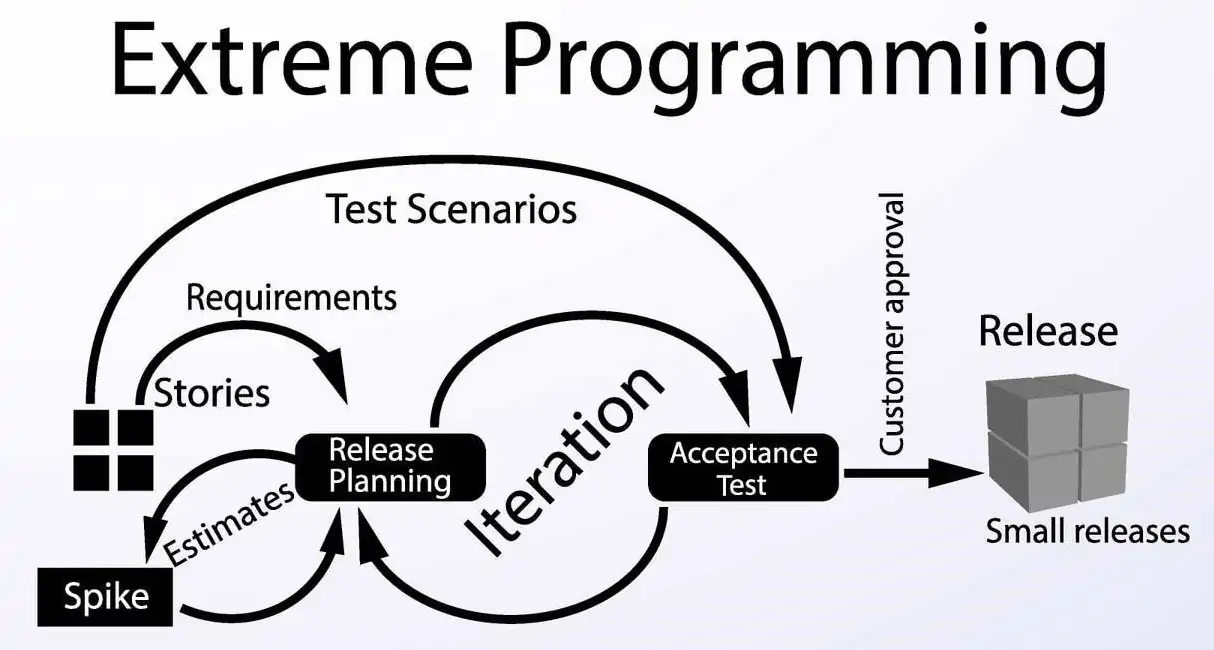
Benefits
- Customers with vague designs of software in mind could use excessive programming and scheduling.
- Continuous testing, as well as integration of minor releases, makes sure top-quality software code.
Drawbacks:
- There is a considerable time loss between the software development team and customers for brainstorming.
- High volatile alterations could influence the productivity of apps.
Use Cases
- Risk-related projects
Learn More: What is risk-based testing in Agile?
Factors to Consider While Choosing Software Testing Methodologies
Selecting the right software testing methodology depends on your project’s unique needs, the stability of requirements, and the team’s ability to collaborate. When deciding on a testing methodology, consider the following factors:
1. Project Size and Complexity:
- Large, complex projects benefit from Iterative or Spiral approaches, focusing on gradual refinement and risk management.
- Agile and XP are ideal for dynamic projects requiring frequent updates and adjustments.
2. Requirements Stability:
- If the project’s requirements are fixed, Waterfall or V-Model are suitable.
- For evolving requirements, Agile and XP provide more flexibility.
3. Development Speed:
- For fast development cycles and quick iterations, Agile is a strong choice, offering rapid feedback and continuous improvement.
4. Risk Tolerance:
- For high-risk projects, the Spiral methodology excels, emphasizing risk assessment at every stage.
5. Team Skill Set and Collaboration:
- Agile and XP require highly collaborative teams skilled in continuous integration and feedback.
- If your team is new to Agile practices, starting with Iterative may be easier to manage.
While Waterfall and V-Model are suitable for structured projects, Agile stands out as the preferred choice for modern software development. Agile’s flexibility, continuous feedback, and customer-focused approach make it a powerful and advanced methodology, particularly for fast-paced, evolving environments.
Whether you’re working on a small project or a large-scale software system, aligning your testing strategy with the right methodology will significantly improve product quality and development efficiency.
How to Use Testing Methodologies
Here is a breakdown of how you can use the testing methodologies:
- Step 1: Analyze the project needs. Understand the type of product, the risks involved, and the timelines.
- Step 2: Choose a Suitable Testing MethodologyCompare and match your product requirements with common testing methodologies like Waterfall model, Agile, V-model etc., and choose the methodology that fits the bill. For example, a banking app might need robust security and accuracy, so you could choose Waterfall or V-model.
- Step 3: Implement the methodology. For example, if you are using Agile, break the project into sprints, write test cases for each user story, test early at frequent intervals, and collaborate with stakeholders.
- Step 4: Gauge the metrics. Regularly review to understand what’s working and what’s not by measuring metrics like defect density, test coverage, and sprint velocity.
Read More: How to determine the Right Testing Metrics
What are different Testing Types?
Some of the different types of testing include:
1. Unit Testing
Unit testing involves testing individual units or components of the code to ensure they work as expected. It focuses on the smallest functional parts of the application, such as methods or functions.
Tools: JUnit, NUnit, Pytest
2. Integration Testing
Integration testing checks the interaction between different modules or services to ensure they work together. It helps identify interface defects and data flow issues between components.
Tools: BrowserStack Automate, Postman, SoapUI, Rest-Assured
3. System Testing
System testing involves testing the entire integrated system to ensure it meets the specified requirements. It verifies the complete application, including functional and non-functional aspects, ensuring that all components work together as a whole.
Tools: BrowserStack Automate, Selenium, Cypress
4. Acceptance Testing
Acceptance testing is done to verify that the software meets business requirements and is ready for deployment. It is usually performed by end-users or stakeholders.
Tools: BrowserStack Live, BrowserStack Automate, Cucumber, Selenium, TestRail
5. Performance Testing
Performance testing evaluates the speed, responsiveness, and stability of the software under a particular workload. It includes tests like load, stress, and scalability testing.
Tools: JMeter, LoadRunner, Gatling
6. Security Testing
Security testing ensures that the software is free from vulnerabilities, risks, and data breaches. It involves identifying weak points in the system that could be exploited by malicious users.
Tools: OWASP ZAP, Burp Suite, Acunetix
7. Usability Testing
Usability testing assesses how easy and user-friendly the software is for end-users. It helps ensure that the system is intuitive, efficient, and meets the expectations of the target audience.
Tools: BrowserStack Live, Crazy Egg, UserTesting, Hotjar
8. Compatibility Testing
Compatibility testing ensures that the software works as expected across different devices, browsers, operating systems, and hardware configurations.
Tools: BrowserStack Live, BrowserStack Automate
Software Testing Techniques: Static vs. Dynamic Testing
Static Testing
Static testing involves evaluating the code and other project documents without executing the code. Techniques such as code reviews, inspections, and static analysis tools are employed to identify defects early in the development lifecycle, enhancing code quality and reducing future costs.
Dynamic Testing
Dynamic testing involves executing the code to validate the software’s behavior and functionality during runtime. It focuses on assessing the application’s performance, responsiveness, and overall user experience through various testing methods, such as unit testing, integration testing, and system testing.
Read more: Static Testing vs Dynamic Testing
Setting up Software Testing Methods
Software test methodologies should not be set up simply for testing product code. The broad picture must be considered, and the project’s primary objective must be satisfied with the test methodology.
- Realistic Scheduling: Rational scheduling is the key to executing a successful testing methodology, and the agenda should meet the requirements of each team member.
- Defined Deliverables: To keep all the team members on a similar page, well-defined deliverables ought to be offered. The deliverables must include direct content without any vagueness.
- Testing Approach: Once scheduling and setting up are made and defined deliverables are accessible, the QA team should formulate the appropriate testing approach. Developer meetings and definite documents must indicate to the team the proper testing approach that can be utilized for the project.
- Transparent Reporting: Clear reporting is very complex, but this step decides the effectiveness of the test approach used in the project.
Which Software Methodology to Choose?
The choice of any software methodology depends on manifold factors like the client requirements, the project nature, the project schedule, etc. In a few cases, development and testing go side by side, while others incorporate testing during later stages when the build is prepared.
- As traditional software development methodologies like V-models, Waterfall, etc., are becoming outdated, many companies are adopting the agile software development model.
- Although the agile approach is renowned, it has several challenges that must be conquered.
- Some of the common challenges encountered in the agile method comprise slow feedback look, inadequate test coverage, deferring significant tests, etc.
BrowserStack infrastructure provides a suite of manual and automation testing that can facilitate your team to accomplish its agile objectives.
Conclusion
As software applications get complicated when intertwined with a pool of platforms, modules, or devices, it is essential to adopt robust test methodologies to ensure that developed products are well-tested, meet requirements, and successfully function in all anticipated environments.
- The selection of a test methodology guarantees that every software project goes through a meticulous testing procedure for the best outcomes.
- These incredible methodologies can also be combined to obtain a much more accurate estimation.
- Such methodologies aren’t just helpful for testing software but can be useful for the complete SDLC.
Although there are different testing methodologies to solve the problem, making the right decision to adopt the correct method will help you be future-proof.



